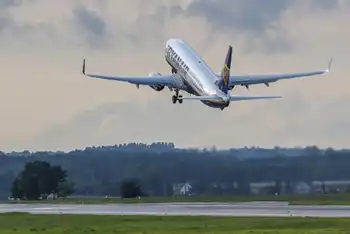Ohio Utility Cites Problems Before Outage
- The Ohio utility under intense scrutiny in the biggest blackout in the nation's history said Sunday there were problems, including strange voltage fluctuations, in the Midwest power grid hours before its transmission lines failed.
"What happened ... is much more complex than a few tripped power lines in our system," said Todd Schneider, a spokesman for FirstEnergy Corp., which went on the offensive Sunday after being targeted by investigators.
He said that some of the unusual power conditions occurred "as early as noon" - more than three hours before FirstEnergy's high-voltage lines, which have been the focus of investigators, failed.
In a statement late Sunday, Michehl Gent, head of an industry group investigating Thursday's massive power outage, acknowledged that "events that occurred on one utility's system may have been affected by events on utility systems elsewhere" in the power grid.
"Although we may have identified the area where the cascading outages began," Gent said, referring to the lines in Ohio that failed, "any attempt on our part to identify the cause of the outages at this point would be speculative and premature."
FirstEnergy Corp., the country's fourth-largest investor-owned utility company with 4.3 million customers in Ohio, Pennsylvania and New Jersey, for three days has been at the center of the blackout investigation.
Gent's group, the North America Electric Reliability Council (NERC), said that as of Sunday evening all the electric transmission systems that had been affected by the blackout were again operating reliably, except for a link between Michigan and Ontario, Canada that remains out "due to operational security reasons." It did not elaborate, but said the line was expected to return to service soon. Twenty-one power generating plants remained down, about a fifth of those that had been shut down by the blackout, NERC said.
Meanwhile, Canadian officials complained that they were not notified promptly when problems began to emerge in the eastern grid interconnection ahead of the blackout. Such notification is required under a 1965 agreement and it "did not happen this past Thursday," said Ontario Premier Ernie Eves in Toronto.
Federal investigators joined industry teams Sunday in the search for clues into what triggered the blackout that left all or parts of eight states dark from Michigan to New York City last Thursday.
Energy Secretary Spencer Abraham promised to move as quickly as possible to get answers and address whatever problem is found, but said so far there's no indication who might be responsible.
"We can't allow it to linger long. We need to address it," said Abraham, who made the rounds of the television talks shows Sunday and repeated a theme of confidence that the cause of the massive power disruption will be uncovered.
Administration officials acknowledge that the mystery surrounding the start of the blackout may not be easily unraveled.
"It's going to take some time," said Abraham on NBC's "Meet the Press." He refused repeatedly during the day to speculate on the cause, whether it was human error or a mechanical glitch, or where the problem might have begun.
The NERC investigation has focused on the likelihood of a combination of mechanical glitches and human failures as it tries to piece together second-by-second events during the hours before the widespread blackout, focusing on power lines in northern Ohio.
NERC, which was created after another major blackout in 1965 to monitor the power grid and set voluntary reliability standards, has said the problem appeared to have cascaded after the breakdown in the three high-voltage lines south of Cleveland in the area serviced by utilities owned by FirstEnergy.
FirstEnergy acknowledged that an alarm that should have flashed a red warning on computer monitors when power was being lost, did not sound in its central control room.
That "certainly contributed to it," said Gent, appearing Sunday on ABC's "This Week." But he said the alarm did not fail at other locations where technicians were supposed to monitor the lines.
"We have to dig into this to see why the alarm wasn't noticed by somebody else" in addition to why the alarm was not working at the FirstEnergy control center.
Later, appearing on CNN, Gent said when the third line "tripped" - or lost power - "that should have separated the local system ... and the rest of the grid should have remained intact."
Related News

Canada's First Commercial Electric Flight
ONTARIO - Canada, renowned for its vast landscapes and pioneering spirit, has achieved a significant milestone in aviation history with its first commercial electric flight. This groundbreaking achievement marks a pivotal moment in the transition towards sustainable aviation, highlighting Canada's commitment to reducing carbon emissions and embracing innovative technologies.
The inaugural commercial electric flight in Canada not only showcases the capabilities of electric aircraft but also underscores the importance of pilot training in advancing e-aviation. As the aviation industry explores cleaner and greener alternatives to traditional fossil fuel-powered aircraft, pilot training plays a crucial role in preparing aviation professionals for…




